People have a pulse, and doctors can diagnose the patient's condition through changes in the pulse phase. The sea also has a pulse. Whenever you see the sea, you will always see it undulating there. The ups and downs of the waves are so much like the beating of human pulse! According to the "pulse" of the sea, you can not "diagnose" its condition, but you can infer its "good or bad temper". When the waves are as big as mountains, it seems that the sea is "angry"; when the waves are rippling, it seems that the sea is "calm". The waves in various shapes reflect the ever-changing and complex "heart performance" of the sea, and also show its infinite power and "huge mind".

Schematic diagram of wave formation
1. The “pulse” of the sea
The waves are the real "Hercules". On the coast of Sri Lanka, there is a lighthouse 60 meters high above the sea. It was shattered by the waves caused by the huge waves hitting the shore. Near the Port of Amsterdam in the Netherlands, a 20-ton concrete block was thrown into the sea by large waves more than 7 meters high and landed on the breakwater. On the coast of Scotland, a huge wave once moved a 1,350-ton boulder more than 10 meters. Off the coast of Newfoundland, Canada, an oil drilling platform was hit by huge waves and quickly sank into the sea. All 84 workers on the platform were killed before they had time to evacuate. This oil platform is one of the largest semi-submersible drilling platforms in the world. In 1952, an American ship was split into two parts by huge waves in the northern Mediterranean Sea. One part was thrown to the nearby coast, and the other part was thrown far into the ocean. You see, how powerful the waves are.
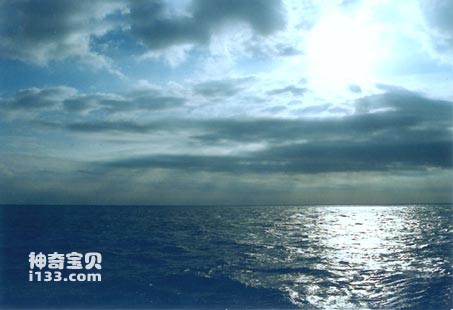
The peaceful moment of the ocean
The power of waves is huge. This is because the waves contain huge energy, which comes from the sun that drives the wind, and the wind transfers the energy it obtains to the waves through the interface between the atmosphere and seawater. On the ocean, when the wind speed changes suddenly and the wind direction turns suddenly, wave energy from all directions gathers; when the wind roars, the energy of the waves increases dramatically. According to scientists' calculations, every time the wave height increases by 1, the energy contained in it increases by 4 times. For years, oceanographers have been looking for a way to extract wave energy and use it to generate electricity for human use. However, waves always move up and down together, and it is not that simple to convert this motion energy into mechanical energy. The Japanese were the first to develop port buoys and signals that used waves as energy. At present, the use of wave energy to generate electricity is relatively effective, including the UK's Sartell Nodding Duck and Japan's "Hamming" ship-type wave power generation device. People are looking forward to a comprehensive system for extracting wave energy being put into operation as soon as possible because it is safe and pollution-free, and both wind and waves are free to use.
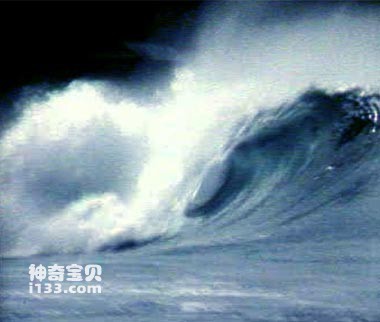
Big waves on the sea surface
The function of waves has brought more benefits to people, but has been ignored by people. We swam in the bathing beach, walked on the flat and clean beach, and lay on it to bathe in the sun. It was so comfortable and comfortable; have you ever thought that the even sand and smooth and round stones on the beach are all permeated with the power of the waves? Hard work. It is it that breaks big rocks and grinds coarse stones into fine sand. Day and night, year after year, it washes away the soil, cleans the sand, and spreads it flat for human enjoyment.
On the beach of Long Island, there is Half Moon Bay. The half-moon-shaped beach is covered with pebbles the size of quail eggs, which the locals call "ball stones". The ball stones include red, green, white, and patterned ones. Outsiders go there, sit on the beach picking pebbles, and are reluctant to leave.

Rough waves lap against the fringing reef
Su Dongpo, the great poet of the Song Dynasty, famously said: "The rocks pierce the sky, the waves crash on the shore, and the dry snow is rolled up." The country is picturesque, and there are so many heroes at one time!" He wrote about the Yangtze River, which is actually a bit exaggerated. It is appropriate to use it to describe the waves. On the rocky shore, the sea cliffs carved by the waves, the tall stone pillars, and the deep caves, aren't they just "rocks piercing the sky"? The huge waves hit the shore, and the waves splashed, making a thunderous sound. It is a true portrayal of "the stormy waves crashing on the shore and rolling up dry piles of snow." The waves play an important role in creating this "picturesque" and magnificent scenery.
2. Starting from the wheat waves
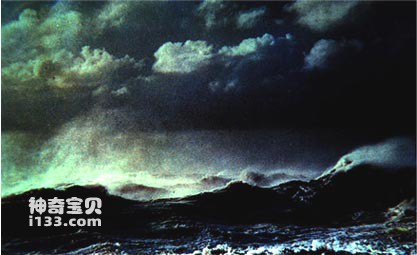
The wave surface of the wind and waves is asymmetrical. Under strong winds, the waves roll and foam splashes.
People who have never seen the sea can hardly imagine what the waves look like. So, let’s start with the waves of wheat in the fields.
During the harvest season, wheat grows in vast fields. The breeze blows, and the wheat ears sway, one after another, forming waves of wheat, rolling forward. This kind of oscillation is called a transverse wave in physics, and its characteristic is that the fluctuations are perpendicular to the propagation direction of the wave.
The waves in the ocean are very much like the waves in the fields. When you stand on the beach or on a ship, you will see waves rolling towards the shore.
Waves can be big or small, so what standards are used to measure the size of waves? Let’s use a regular wave surface to introduce some special terms about waves. They are all used to measure the size of waves, called wave elements.
The highest point of the wave surface is called the wave crest; the lowest point of the wave surface is called the wave trough; the vertical distance between adjacent wave crests and wave troughs is called the wave height, and the unit of wave height is meters.
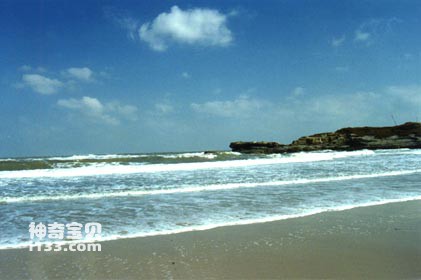
The two microwaves advance one by one from the distance to the shore.
The horizontal distance between two adjacent wave crests or two wave troughs is the wavelength, and the unit of wavelength is also meters.
The time it takes for a wave to rise and fall once is called the wave period. Period is the time interval between two consecutive wave peaks passing through a fixed point, and the unit is seconds.
The speed at which the wave form moves forward is called the wave speed, which represents the distance the wave propagates per unit time, and the unit is meters/second.
The direction in which waves propagate is called wave direction. The line that represents the direction of wave propagation is called the wave direction line.
The line connecting the wave crests perpendicular to the direction of wave propagation is called the crest line. The crest line and the wave direction line are perpendicular to each other.
Waves in the ocean can be divided into many different types from different angles.
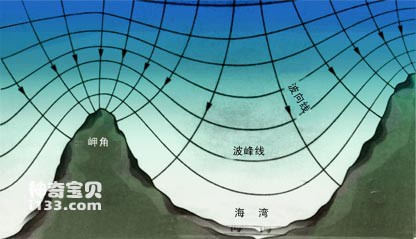
The wave pattern of waves in the bay
For example, according to the causes of wave generation, waves include wind waves, seismic waves, swells, etc. Wind waves are waves generated under the direct action of wind. They have an asymmetrical shape, with a gentle windward side and a steep leeward side, and sharp wave crests. Under strong winds, the wave crests overturn and break, and are accompanied by rolling waves, splashing foam, and violent waves. The direction of propagation is consistent with the direction of the wind. Waves caused by ocean earthquakes are called seismic waves. Wind waves that continue to propagate after leaving the area where the wind acts, and wind waves that still exist on the sea after the wind stops, have smoother wave surfaces due to atmospheric friction and energy loss, and are called swells. The characteristics of a swell are its rounded shape, long crest line and long period. Waves generated by the tidal force of celestial bodies such as the sun and moon are called tidal waves. Tidal waves will be described in detail in another chapter. The waves formed at the interface between two layers of seawater with different densities inside the ocean are called internal waves.
People often see waves arranged very neatly at the beach, like a parade passing a review stand, advancing row by row from the distance to the shore. The crests of the front row and the crests of the back row are kept at an equal distance. Crossover occurs.
3. How far can the ball float in the waves
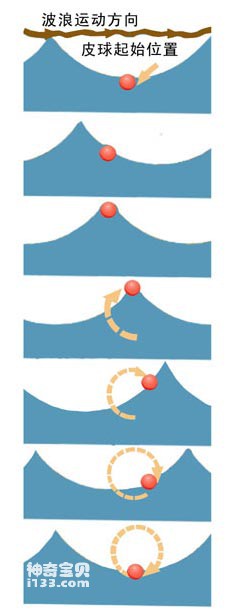
The ball moves forward in a waveform, and the ball just makes a circular motion.
If you throw a ball into the waves, how far will it follow the waves? Can you answer this question? Here, we also have to think about the waves of wheat in the fields. In the wheat field, despite the rolling waves of wheat, the wheat is still firmly rooted in the soil, and the ears of wheat still grow firmly on the straw. When a wheat wave occurs, the wheat ears just sway near their own position, and all the swaying wheat ears are combined. This creates a wave shape.
This phenomenon is not limited to wheat waves. You can get a long rope. One end is fixed on the wall, hold the other end in your hand and shake it gently with your wrist, and a wave will move forward along the rope. This wave causes the entire long rope to move, but the rope itself does not move forward.
Now back to the ball in the sea. If you observe carefully, you will find that the ball only bumps up and down and sways left and right with the waves in the water (see Figure 0125.4.1). When the wave crest comes, the ball is lifted up and moves forward a little distance with the wave; when the wave trough comes, the ball is thrown down and returns to its original position. As a result, a wave has passed, which means that the waveform has moved forward, but the ball is still in place and has not moved forward, but only made a circular motion with the wave.
Sea water is composed of countless very small water droplets, and these small water droplets are usually called water particles. When there is no wind on the sea, the water particles on the surface remain calm. Once there is wind on the sea, each water particle is blown away from its original equilibrium position. Under the action of wind and gravity, it moves in an approximate circular motion. The center is the original equilibrium position. Countless water quality points make such circular motions in sequence, forming waves that propagate forward. What should be emphasized here is that the propagation of waves is only the propagation of wave shapes. The water point itself does not move forward, but makes a circle around the equilibrium position.sports.
The water particles in sea water are closely connected together. When the sea surface fluctuates, it will inevitably drive the water particles below it and pass them down one by one. When the wave crest passes over, the water particles on the sea surface are picked up, and the water particles below the sea surface are also lifted up; when the wave trough passes over, the water particles on the sea surface are thrown down, and the water particles in the lower layer also move downward accordingly. Therefore, when the sea surface fluctuates, similar fluctuations occur in the water layer below the sea surface. However, the fluctuations below the sea surface are smaller than those on the surface. This is because as the depth increases, the resistance and friction to the fluctuations increase, the energy decreases, the radius of the circular motion of the water particles also decreases, and the wave height also decreases. It becomes smaller, and when it reaches a certain depth, the waves lose their "power", become weaker and weaker, and finally disappear completely. According to calculations, at a depth of one wavelength from the sea surface, the waves are only l/500 of the sea surface wave height. For example, if the wave height on the sea surface is 8 meters and the wavelength is 150 meters, then at a depth of 150 meters, the wave height is only 0.016 meters. We know that the water depth of the ocean exceeds 1,000 meters, so although there will be rough waves on the sea, there is still a peaceful world in the depths of the ocean.
4. There can be no waves without wind
"There is no wind without waves." This is a saying in our country. This sentence clearly explains the external reasons for the generation of wind and waves in the ocean. Usually, the fluctuations produced by the sea surface under the direct action of wind are called wind waves. Since wind waves are generated by the action of wind, how does wind generate waves? After wind waves are generated, how do they grow and decay? This is a very complex process. Until now, people have little understanding of this physical process. We don’t know enough yet.
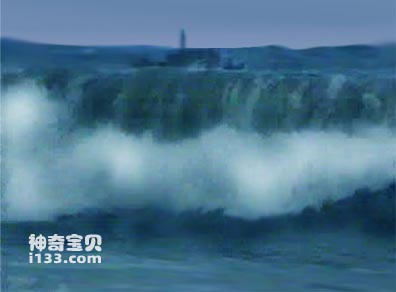
Diagram of wind and waves
Let’s first talk about how wind creates waves. This question seems simple, but it is the most basic and most difficult in wave research. There are actually two issues here: one is how the energy of the wind is transferred to the water surface and generates the initial wind waves; the other is how the energy entering the wind and waves is redistributed during the wave motion.
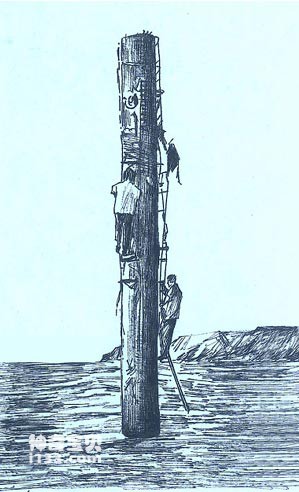
Observation posts built in shallow seas equipped with instruments to observe marine phenomena
At present, there are two main explanations for the generation of wind and waves. One explanation is that due to the inconsistent pressure distribution of the wind, local water surface is pressurized and causes fluctuations. Once a wind wave occurs, the wind force can directly act and the wave will continue to grow. Another explanation is based on the perspective of fluid mechanics. It is believed that when two fluids in contact with each other move relative to each other, the contact surface of the fluids becomes unstable, and a certain wave surface must be formed to maintain balance. When there are slight bumps and convexities on the water surface, the speed of the airflow at each point on the bumpy surface is different. The wind speed increases and the pressure decreases at the convex places, causing an upward trend; on the contrary, the wind speed decreases at the concave places. , the pressure increases, causing a downward trend. In this way, the unevenness of the water surface is increased, and the surface tension and gravity of the water tend to restore the water surface to its original shape, which forms wind and wave movement. When the wind is very weak, the sea surface remains calm. When the wind speed reaches a certain speed, capillary waves begin to appear on the sea surface. The wavelength of capillary waves is very short and the wave height is very small. This kind of wave can be regarded as a wrinkle on the sea surface. It only exists on a very thin layer of water on the sea surface. As the wind continues to blow, the wavelength and height of the capillary waves increase, turning them into gravity waves. The energy of the wind can be directly exerted on the windward slope of the waves with the help of the friction between the air current and the sea surface. When the wind speed is greater than the wave speed, the waves are always under the pressure of the wind, and the energy of the wind is continuously input into the water body, causing the wave height and wavelength of the wind waves to continue to increase. Especially when the wind speed is 3-4 times the wave speed, the energy absorbed by the waves is the strongest, the wave height and wavelength increase fastest, and larger wind waves gradually form. As the wind and waves increase, the speed of the waves also increases. When the wave speed equals the wind speed, the waves no longer receive energy from the wind, and the wind waves stop developing. The waves at this time are the largest waves under this wind speed.
When the wind direction changes or the wind stops, due to the effect of inertia, the wind waves still propagate along the original direction. At this time, due to air resistance and other reasons, the surface of the waves becomes very smooth, which is called swell. During the propagation process of the swell, not only does it lose energy, but it consumes energy due to the resistance of the air. When it travels to shallow water areas, the friction on the seabed also consumes energy. As a result of energy consumption, the wave height of the waves is smaller than the original wave height, but the period and wavelength are getting longer and longer. The emergence of swells indicates that the waves have entered the decay stage.
In short, the generation, development and decay of wind and waves depend on the relationship between energy intake and consumption. When the energy income is greater than the expenditure, the wind and waves will grow and develop; on the contrary, the wind and waves will tend to attenuate and disappear.
5. The sea breeze is roaring and the waves are rolling
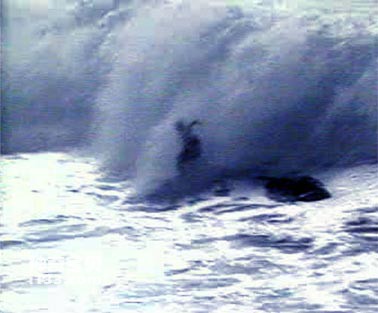
The spectacular rolling waves are an ideal place for surfing.
Since wind waves are caused by wind, what are the factors that affect the generation, development and attenuation of wind waves?
For deep-water areas, the first factor that affects the generation and development of wind waves is wind speed. Generally, the greater the speed of the wind, the greater the waves generated. Another factor is wind hour, which is how long the wind blows continuously in the same direction. Generally speaking, the longer the wind acts on the water surface, the greater the energy the water body obtains, and the greater the wind and waves. The speed and direction of winds in nature are constantly changing. It is not easy to clearly determine the wind time based on a certain wind direction. Changes in wind direction may generate waves in different directions, but most of these waves are concentrated at 30° from the average wind direction. Within the range of angles, therefore, when considering determining the wind, this direction can be approximately placed at 30°. Range changing winds are included.
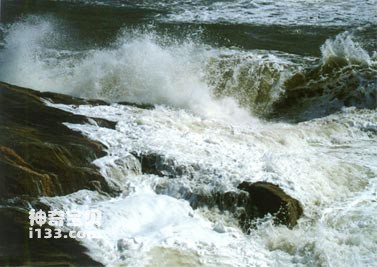
The waves hit the shore rocks
Another influencing factor is the distance the wind acts, generally called the length of the wind zone. The role of the wind zone is not difficult to understand. We stood on the shore and watched the waves in the sea, and it was obvious if the wind was blowing from land to sea. The waves are smaller at points closer to the shore and bigger at points farther from the shore.
As mentioned before, the size of sea waves is mainly determined by wind speed, wind blowing time and wind zone length. Therefore, according to the weather map in the meteorology, the wind time and wind area of a sea area can be obtained, so as to predict the wind and wave elements. At present, many models for wind and wave forecasting have been developed at home and abroad.
animal tags:
We created this article in conjunction with AI technology, then made sure it was fact-checked and edited by a Animals Top editor.